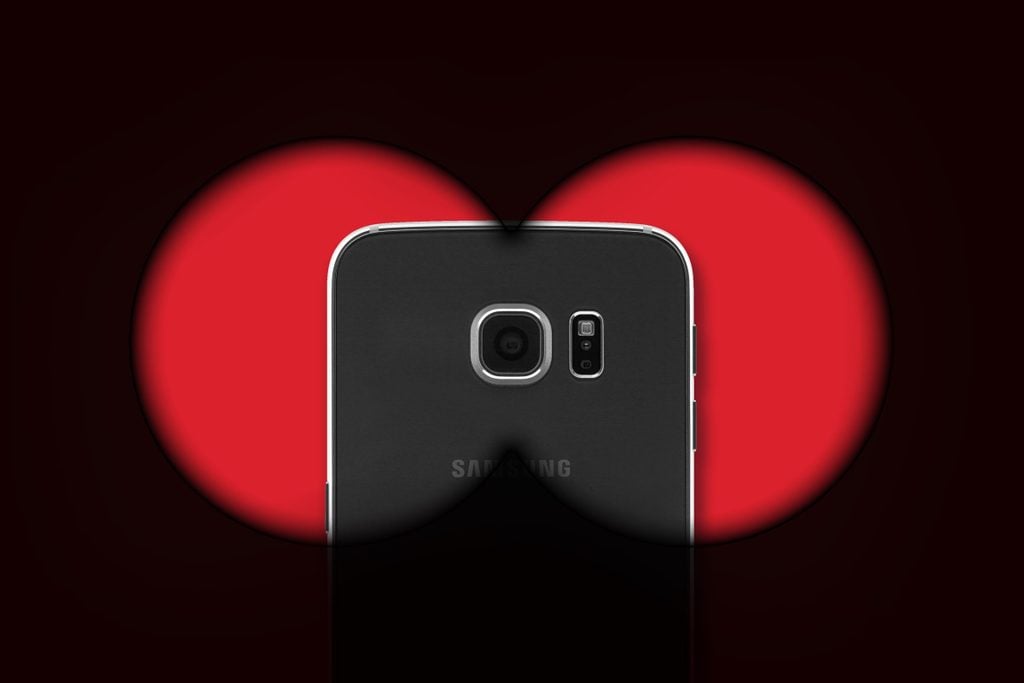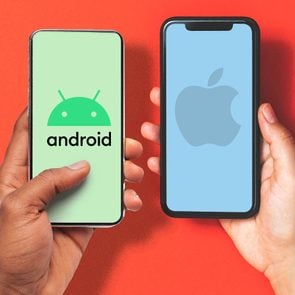How to Remove Spyware on an Android Phone
Updated: Aug. 09, 2022

Worried that someone’s watching you? You have good reason to be concerned. Here’s how to spot and remove spyware on your phone—and keep your personal information safe.
Sting once sang, “Every breath you take, every move you make, I’ll be watching you.” Little did the artist know that he’d just created a mission statement for spyware, programs that infect tech devices and allow criminals to steal and stalk. This isn’t a new problem. Eight years ago, the FBI issued a warning on spyware attacking Android mobile operating systems. But today, the crisis is more troubling, and more pervasive, than ever before. In fact, it’s one of the top mobile security threats facing smartphone users in 2021. Here’s how you can find out if you have spyware on your Android phone—and what you can do.
What is spyware, and why is it dangerous?
Spyware is a form of malicious software (aka malware) that monitors your Internet activity without your knowledge. It can track your log-ins and passwords, as well as track your phone itself and extract your most sensitive information, including your GPS location. If you don’t want your location shared with Google, here’s how to turn off location services on an Android.
Spyware can even “take over” your phone. Your text messages, your browsing history, your photos—they all are exposed. Often, hackers are trying to access your financial information. With the right information, they can get into your bank accounts and credit cards and extract the info needed for identity theft. The cost of malware to victims is staggering; it’s expected to reach $6 trillion globally in 2021.
And that’s not even the darkest end of the spectrum. Adam Scott Wandt, a cybersecurity and forensics expert and an assistant professor of public policy at John Jay College of Criminal Justice in New York City, says identity theft is not the worst outcome of spyware finding its way onto your Android phone. “Worse would be stalking, murder, and a breach of national security,” he explains.
What kind of spyware can infiltrate your Android phone?
There are a number of different kinds of spyware out there, including browser hijacks, adware, and keyboard loggers. On Android phones, the specific types to look for have names like Phone Spector, Auto Forward, and Highster Mobile. The crooks definitely don’t have to go to the Dark Web to find spyware. Much of it is sold commercially online, Wandt says.
When it comes to “stalkerware,” they are often loaded into apps that claim to provide “solutions.” For example, they might be marketed as services for parents seeking a way to monitor their child’s mobile device usage or for business owners looking to keep watch over a staffer’s online activities. But they can be used to secretly spy and stalk. In 2019, Avast discovered eight stalkerware apps in the Google Play Store and reported them. Google removed the apps…but not before they had been downloaded more than 140,000 times. Here are a few more apps that might be spying on you right now. Also, make sure Google Play Protect is working properly on your phone before downloading apps.
Where does Android spyware come from?
Believe it or not, there’s a good chance that you unwittingly put the spyware on your phone. If you’ve installed an app, downloaded a file, or clicked on a link in a message or email and your Android started acting differently afterward, then there’s a good chance that you just got the unwelcome gift of spyware. It often comes hidden in software you downloaded. Websites, ads, apps, instant messages, links, file-shares—all of them can be the source. FYI, these are the 8 apps security experts would never have on their phones.
What is the likelihood of spyware getting on an Android?
More than 70 percent of Americans are worried about personal data being stolen from their devices—and for good reason. Around 24,000 malicious apps are blocked on smartphones every day, and with so many out there, the chances are high that at least some will get through. When it comes to Android phones, they are far easier to breach than iPhones, says Wandt. “The Android operating system hosts about half of the world’s malware infections,” he notes. However, that doesn’t mean iPhones are impossible to breach and it’s important to know how to remove spyware from iPhones, too.
How do I detect and locate spyware on my Android?
There are a number of telltale signs that you might have spyware on your Android phone. Of course, some of these symptoms may have other explanations, and you may actually need a new cell phone. But if you don’t have an older-model phone and you’re experiencing more than one of these issues, spyware could be the culprit. Here’s what to look for:
- Your battery drains faster than before.
- Your phone feels unusually hot.
- Apps take longer to load and often freeze.
- An app or apps that you don’t remember installing shows up.
- Your phone lights up on its own or shuts down automatically.
How do I check for spyware on my Android?
The best way to find out if you have spyware is to run a malware detection program on your Android, says Wandt. He recommends Avast. Other good companies are Norton and McAfee.
How do I remove spyware from my Android?
If you think you’ve spotted an app that is spying on you, removing it isn’t as straightforward as you may assume. First, hunt down the questionable apps. To remove them, put your phone into safe mode, which is recommended for troubleshooting questionable software and apps that may be causing issues. Find safe mode by pressing and holding the power button, tapping and holding “power off,” and then tapping again when the “Reboot to Safe Mode” prompt appears.
The challenge: The more diabolical types of spyware can change administrator permissions, and this may prevent permanent removal, even in safe mode. Experts say the next step is using a spyware removal program, which is also made by companies like Avast, Norton, and McAfee.
But if you have doubts over whether all the spyware is gone—and particularly if you know that someone has recently tried to monitor you through your phone—the best course of action is to factory reset your Android. “I’m a fan of completely resetting your phone,” said Wandt. The problem is that the reset will wipe out your photos, contacts, and stored passwords. You can’t back up everything on your phone because that could easily back up the spyware as well, but you can use Dropbox or other types of Android cloud storage for your photos and contacts. It’s the best way to feel secure—and the only way you can be completely sure your phone is free of spyware. If you want to take your data protection to the next level, learn about an encrypted phone and how it can help protect your information.
By the way—if you don’t like Google Assistant, read on to learn how to turn off Google Assistant on your Android phone.
Sources:
- Adam Scott Wandt, a cybersecurity and forensics expert and an assistant professor of public policy at John Jay College of Criminal Justice
- Safety Detectives: “15 (CRAZY) Malware and Virus Statistics, Trends & Facts”
- Avast: “How to Detect & Remove Spyware From an Android Phone”
- Digital Trends: “How to turn safe mode on and off in Android”


